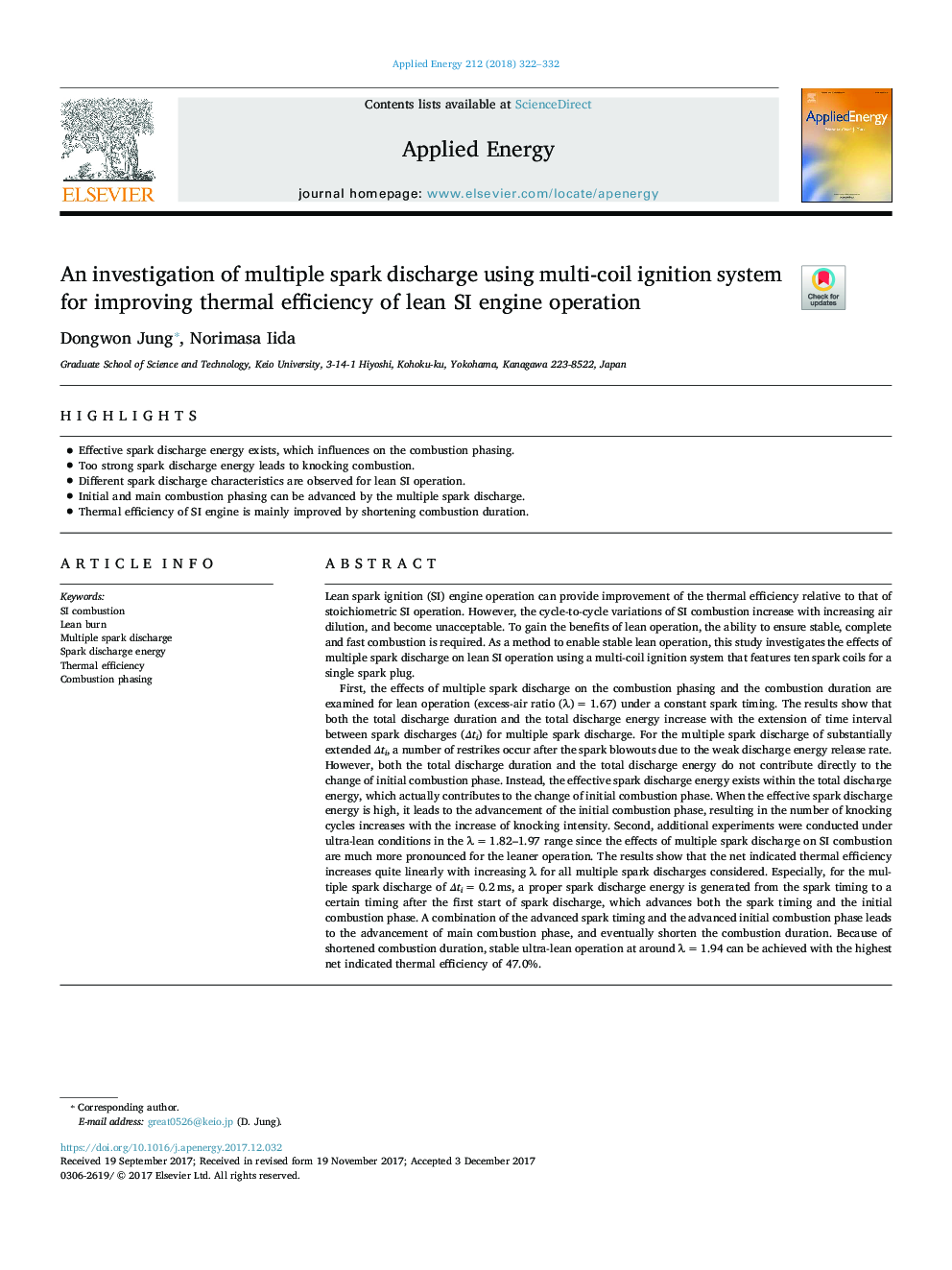| Article ID | Journal | Published Year | Pages | File Type |
|---|---|---|---|---|
| 6680917 | Applied Energy | 2018 | 11 Pages |
Abstract
First, the effects of multiple spark discharge on the combustion phasing and the combustion duration are examined for lean operation (excess-air ratio (λ)â¯=â¯1.67) under a constant spark timing. The results show that both the total discharge duration and the total discharge energy increase with the extension of time interval between spark discharges (Îti) for multiple spark discharge. For the multiple spark discharge of substantially extended Îti, a number of restrikes occur after the spark blowouts due to the weak discharge energy release rate. However, both the total discharge duration and the total discharge energy do not contribute directly to the change of initial combustion phase. Instead, the effective spark discharge energy exists within the total discharge energy, which actually contributes to the change of initial combustion phase. When the effective spark discharge energy is high, it leads to the advancement of the initial combustion phase, resulting in the number of knocking cycles increases with the increase of knocking intensity. Second, additional experiments were conducted under ultra-lean conditions in the λâ¯=â¯1.82-1.97 range since the effects of multiple spark discharge on SI combustion are much more pronounced for the leaner operation. The results show that the net indicated thermal efficiency increases quite linearly with increasing λ for all multiple spark discharges considered. Especially, for the multiple spark discharge of Îtiâ¯=â¯0.2â¯ms, a proper spark discharge energy is generated from the spark timing to a certain timing after the first start of spark discharge, which advances both the spark timing and the initial combustion phase. A combination of the advanced spark timing and the advanced initial combustion phase leads to the advancement of main combustion phase, and eventually shorten the combustion duration. Because of shortened combustion duration, stable ultra-lean operation at around λâ¯=â¯1.94 can be achieved with the highest net indicated thermal efficiency of 47.0%.
Related Topics
Physical Sciences and Engineering
Energy
Energy Engineering and Power Technology
Authors
Dongwon Jung, Norimasa Iida,
